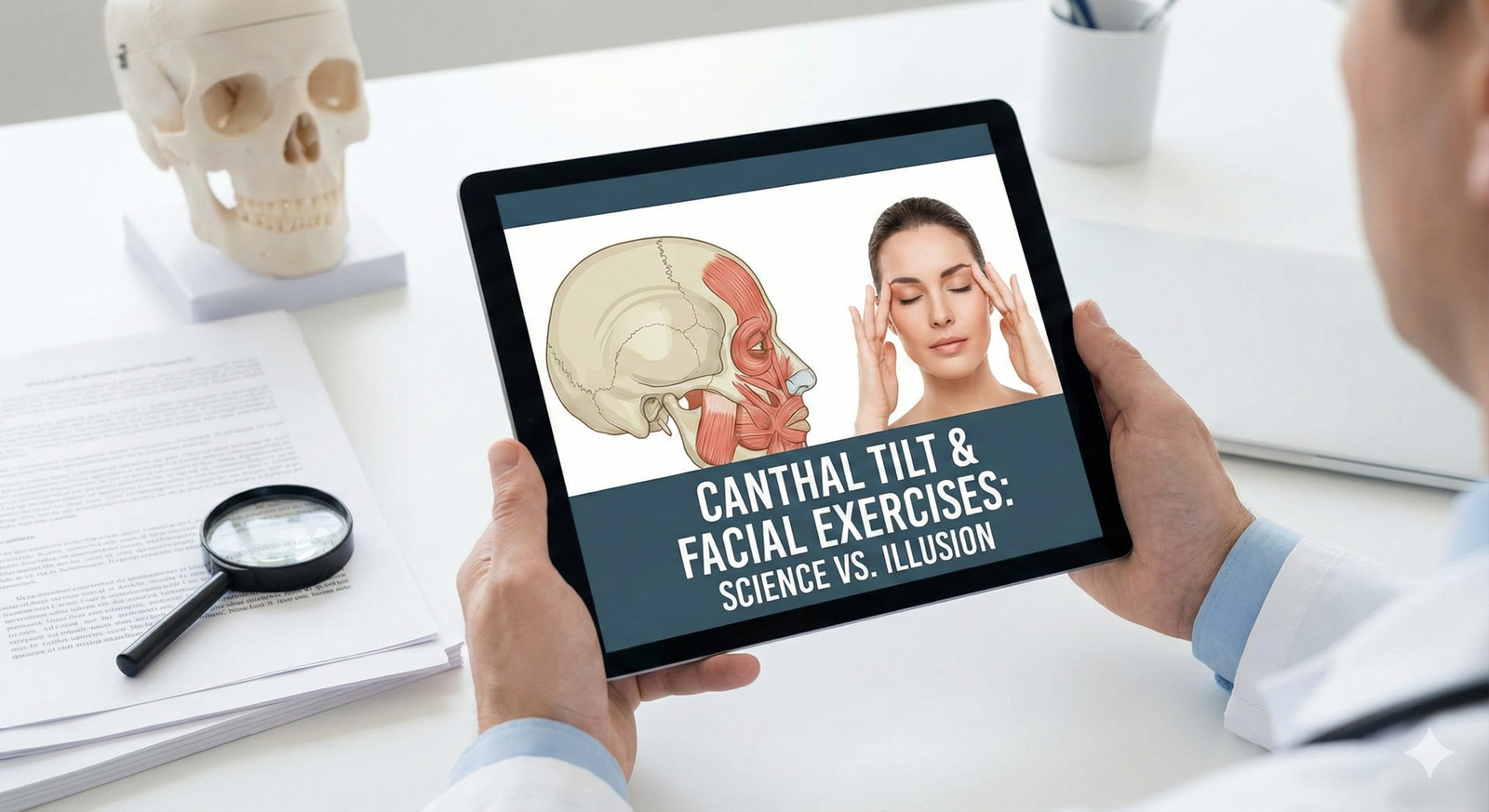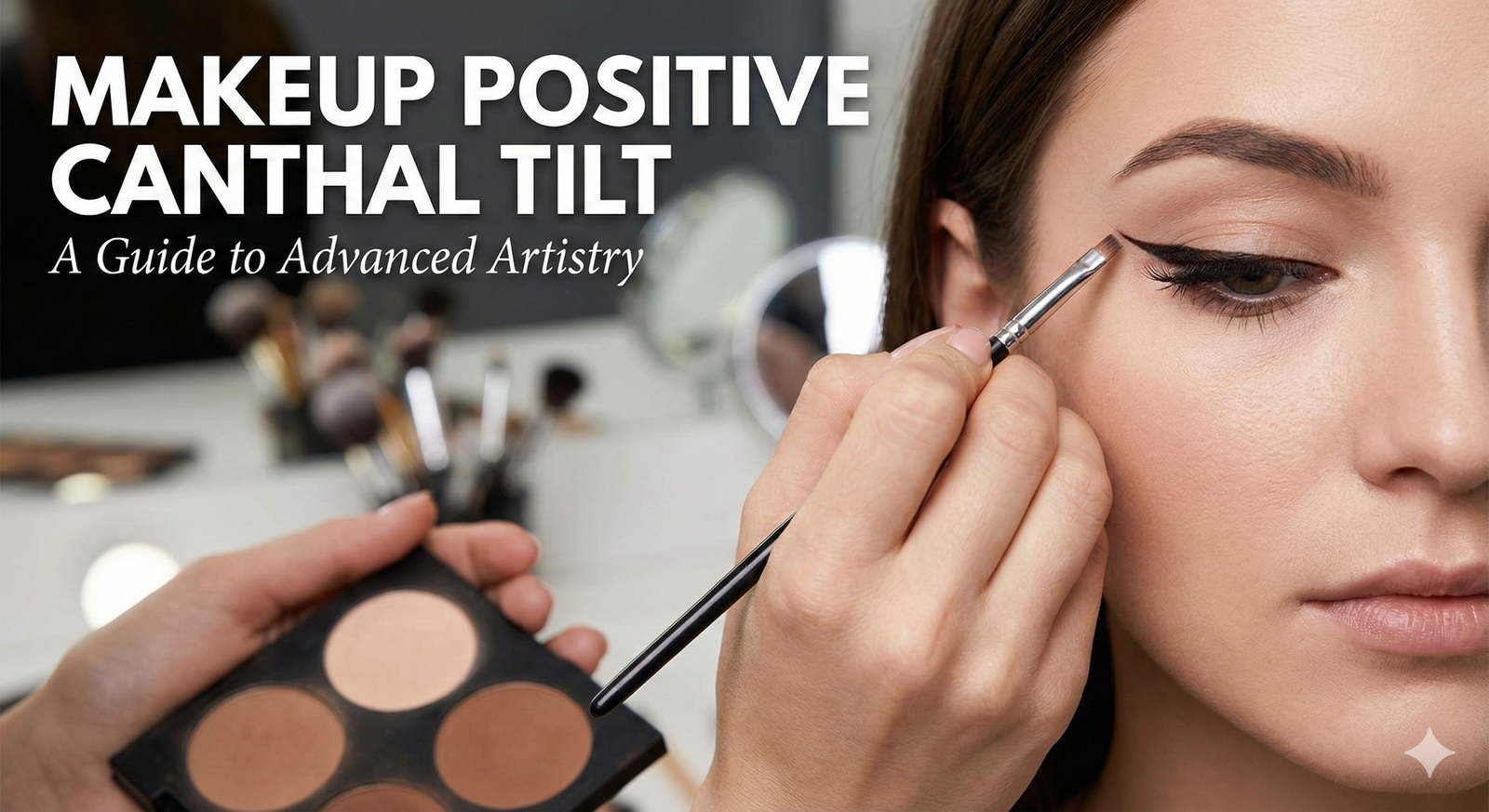Introduction to Facial Beauty Research
The concept of facial beauty has been a subject of intrigue and fascination for centuries, captivating not only artists and poets but also scientists and researchers. In recent decades, the study of facial attractiveness has garnered significant academic interest across diverse fields such as psychology, sociology, and economics. The allure of facial beauty transcends mere aesthetics; it profoundly influences social interactions, self-esteem, and even economic opportunities.
Researchers are particularly interested in understanding the underlying principles that dictate what is considered attractive. Psychological studies suggest that facial beauty often correlates with perceived traits such as health, fertility, and genetic fitness. These perceptions can influence romantic and social choices, often subconsciously guiding human behavior. For instance, individuals with symmetrical facial features are frequently rated as more attractive, which some theories attribute to evolutionary advantages linked with good health.
Socially, facial attractiveness plays a pivotal role in shaping interpersonal relationships. Attractive individuals are often assumed to possess more favorable personality traits, a phenomenon known as the “halo effect.” This bias can lead to preferential treatment in various social settings, from educational opportunities to career advancements. The social implications of facial beauty extend to social media, where appearance can significantly impact an individual’s digital presence and influence.
From an economic standpoint, the benefits of facial attractiveness can be substantial. Research indicates that attractive individuals often earn higher salaries, secure more job offers, and experience better career progression. This economic advantage underscores the importance of understanding the parameters of facial beauty, as it can have far-reaching consequences on an individual’s economic well-being.
As we delve deeper into the ongoing researches about facial beauty, it is essential to recognize the multifaceted nature of this topic. The subsequent sections will explore various studies and findings that shed light on the science behind aesthetic appeal, providing a comprehensive overview of the current state of research in this captivating field.
Historical Perspectives on Facial Beauty
Throughout history, the perception of facial beauty has been a dynamic and multifaceted concept, deeply influenced by cultural, social, and historical contexts. In ancient civilizations, such as Egypt and Greece, beauty was often associated with symmetry and proportion, reflecting the societies’ appreciation for harmony and balance. The Egyptians, for example, revered the symmetrical features of Nefertiti, while the Greeks celebrated the idealized proportions of their gods and goddesses, epitomized in sculptures like the Venus de Milo.
In medieval Europe, the standards of facial beauty were heavily influenced by religious iconography. Pale skin, high foreheads, and delicate features were considered beautiful, representing purity and divine favor. This period also saw the emergence of beauty as a reflection of social status, with nobility often depicted with idealized features in paintings and tapestries.
The Renaissance era marked a significant shift, as artists and scholars began to explore human anatomy with a scientific lens. Leonardo da Vinci’s studies on the human face and the Vitruvian Man exemplify this transition, bridging the gap between art and science. The Renaissance ideals of beauty, characterized by balanced proportions and harmonious features, laid the foundation for many contemporary standards.
In contrast, non-Western cultures have had their unique standards of facial beauty. In classical Chinese culture, beauty was often associated with oval faces, small mouths, and curved eyebrows, reflecting the society’s aesthetic values. Similarly, in traditional Japanese culture, the concept of “miyabi” or refined elegance, emphasized delicate features and a serene expression.
The 20th and 21st centuries have seen a profound evolution in the perception of facial beauty, driven by globalization and advancements in technology. The advent of plastic surgery, digital imaging, and artificial intelligence has facilitated a more scientific approach to studying facial beauty. Contemporary research now often focuses on objective measures, such as facial symmetry, averageness, and the golden ratio, while also considering the psychological and social factors that influence perceptions of beauty.
As we continue to explore the science behind aesthetic appeal, understanding the historical perspectives on facial beauty provides valuable insights into how our current standards have been shaped. This historical context not only enriches our appreciation of diverse beauty standards but also underscores the importance of a multidisciplinary approach in ongoing research.
Genetic Factors Influencing Facial Beauty
Facial beauty, long considered a subjective matter, is increasingly being understood through the lens of genetic research. Studies have revealed that numerous genetic components contribute to facial attractiveness, providing a scientific foundation to what was once considered purely a matter of personal taste. One of the most significant aspects is facial symmetry, a trait often associated with attractiveness. Research indicates that individuals with symmetrical faces are generally perceived as more attractive, and this symmetry is largely influenced by genetic factors.
Another critical inheritable trait affecting facial beauty is skin quality. Genetic variations can dictate skin texture, tone, and overall health, which are major contributors to one’s attractiveness. For instance, certain genes are known to influence the production of collagen and elastin, proteins that maintain skin elasticity and firmness. Additionally, genetic predispositions can affect susceptibility to skin conditions such as acne or hyperpigmentation, further impacting perceived beauty.
Recent advancements in genomics have enabled researchers to identify specific genes associated with these and other facial features. For example, the MC1R gene is known to influence skin pigmentation, while the PAX3 gene has been linked to facial bone structure. These discoveries are not only fascinating but also hold potential for future applications in aesthetic and medical fields. Understanding the genetic basis of facial beauty could lead to more personalized skincare and cosmetic treatments, tailored to an individual’s unique genetic makeup.
Moreover, ongoing studies are exploring the interplay between genetics and environmental factors in shaping facial beauty. While genetics provide the blueprint, lifestyle choices and external conditions also play a crucial role in the manifestation of these traits. As research progresses, the potential for groundbreaking discoveries in this area remains vast, promising a deeper understanding of the intricate mechanisms behind facial attractiveness.
The Role of Symmetry and Proportion
Facial symmetry and proportion have long been recognized as significant factors in the perception of beauty. Current research underscores that humans are inherently drawn to symmetrical faces, often associating them with health, genetic fitness, and overall aesthetic appeal. Symmetry refers to how evenly balanced the features of a face are, while proportion pertains to the relative sizes and distances between various facial elements.
Scientific studies reveal that symmetrical faces are perceived as more attractive because they may signal biological fitness. Evolutionary biology posits that symmetry indicates an individual’s genetic quality and resistance to environmental stressors during development. Consequently, symmetrical features may serve as subconscious markers of a potential mate’s reproductive viability.
Proportion, on the other hand, relates to the Golden Ratio, an ancient mathematical concept often applied in art and architecture. This ratio, approximately 1.618, is believed to represent an ideal standard of beauty. Research demonstrates that faces with proportions close to the Golden Ratio are often deemed more attractive. For instance, the distance between the eyes, the width of the nose, and the structure of the jawline should conform to specific proportional guidelines to enhance perceived beauty.
Advancements in technology have facilitated the precise measurement of facial symmetry and proportion. High-definition imaging and computer algorithms now allow for detailed facial analysis, providing insights into the intricate balance of features that contribute to beauty. These tools are increasingly being used in fields such as cosmetic surgery, orthodontics, and even in the development of beauty-enhancing applications.
Overall, the science of facial symmetry and proportion offers a fascinating glimpse into the mechanics of aesthetic appeal. As technology continues to evolve, our understanding of what constitutes facial beauty is likely to become even more refined, offering new possibilities for enhancing and appreciating human aesthetics.
Cultural and Social Influences on Facial Beauty Standards
Facial beauty, though often perceived as an intrinsic quality, is significantly shaped by cultural and social factors. Cross-cultural studies reveal that perceptions of beauty vary widely across different societies, highlighting the substantial influence of cultural heritage and social norms. These studies show that what is considered attractive in one culture may not necessarily be regarded as such in another, underscoring the role of cultural context in shaping beauty standards.
Media influence is a powerful determinant of facial beauty standards. The proliferation of global media channels has led to the widespread dissemination of specific beauty ideals, often influenced by Western standards. This phenomenon, termed as ‘media homogenization’, has resulted in a convergence of beauty ideals, where features such as fair skin, symmetrical faces, and slim body types are often glorified. However, this convergence does not entirely erase cultural specificities, as local media continue to promote regionally distinct standards of beauty.
Social norms further complicate the landscape of facial beauty. Societal expectations and peer influences play a crucial role in shaping individuals’ perceptions of beauty. In many cultures, social norms dictate that certain facial features are more desirable, leading to practices such as cosmetic surgery to conform to these ideals. The impact of social media platforms cannot be overstated, as they amplify these norms and create a feedback loop that reinforces specific beauty standards.
The concept of ‘universal beauty’ has long been debated among researchers. While some argue that certain facial features have universal appeal, recent research suggests that beauty is predominantly a social construct, heavily influenced by cultural and social factors. Studies have shown that features like facial symmetry and clear skin are generally preferred across cultures, but other attributes such as skin tone, eye shape, and facial structure are subject to cultural variations.
In conclusion, while there may be some elements of facial beauty that are universally appreciated, the majority of beauty standards are deeply rooted in cultural and social contexts. Understanding these influences is crucial for a comprehensive appreciation of the complex nature of facial beauty.
Psychological Implications of Facial Beauty
Facial beauty has long been a subject of fascination and intensive study within the realms of psychology and social sciences. Research suggests that facial attractiveness significantly influences an individual’s self-esteem, social interactions, and overall mental health. Studies indicate that people perceived as attractive often enjoy higher levels of self-esteem. This boost in self-worth is likely due to the positive feedback and social validation they receive from their surroundings.
Moreover, facial beauty plays a critical role in social dynamics. Attractive individuals tend to experience more positive social interactions and are often attributed with favorable personality traits such as kindness, intelligence, and sociability. This phenomenon, known as the “halo effect,” implies that physical appearance can lead to biased perceptions and treatment. The impact of facial beauty extends to professional settings, where attractive individuals may receive preferential treatment, including higher salaries and more opportunities for advancement.
However, the psychological implications of facial beauty are not uniformly positive. The pressure to conform to societal standards of beauty can lead to significant mental health issues. Individuals who perceive themselves as less attractive may experience lower self-esteem, social anxiety, and even depression. The constant exposure to idealized images of beauty in media can exacerbate these issues, leading to a distorted self-image and body dysmorphic disorders.
The societal implications of these findings are profound. They highlight the need for a more inclusive and diverse representation of beauty in media and culture. By promoting a broader spectrum of beauty, it is possible to mitigate the adverse psychological effects associated with unrealistic standards. Additionally, raising awareness about the psychological impact of facial beauty can foster a more empathetic and equitable society.
Technological Advances in Facial Beauty Research
In recent years, the field of facial beauty research has witnessed significant advancements, driven by the integration of cutting-edge technologies. These innovations are not only revolutionizing the way we study aesthetic appeal but also providing deeper insights into the intricacies of facial attractiveness. Among the most impactful technologies are facial recognition software, 3D imaging, and artificial intelligence.
Facial recognition software has become an indispensable tool in beauty research. Originally developed for security and identification purposes, this technology is now being harnessed to analyze facial features with unprecedented precision. By mapping and measuring various facial landmarks, researchers can quantify aspects of symmetry, proportion, and other attributes linked to perceived attractiveness. This capability allows for large-scale studies that were previously unfeasible, offering a robust dataset for analysis.
3D imaging technology takes the exploration of facial beauty a step further by providing a comprehensive three-dimensional representation of the human face. Unlike traditional 2D images, 3D models capture the depth and contours of facial features, enabling a more detailed examination of elements such as skin texture, volume, and spatial relationships. This technology is particularly valuable in understanding the nuances of facial expressions and how they contribute to overall attractiveness. Additionally, 3D imaging facilitates the creation of highly accurate digital reconstructions, aiding in both clinical and aesthetic evaluations.
Artificial intelligence (AI) is arguably the most transformative technology in facial beauty research. Machine learning algorithms can process vast amounts of data, identifying patterns and correlations that might elude human observation. AI can analyze facial features across diverse populations, accounting for cultural and individual variations in beauty standards. Moreover, AI-driven models can predict the impact of cosmetic interventions, providing personalized recommendations based on scientific evidence. This predictive capability not only enhances research accuracy but also has practical applications in fields like plastic surgery and dermatology.
Overall, these technological advances are propelling facial beauty research into a new era, enabling more precise, comprehensive, and objective studies. By leveraging facial recognition software, 3D imaging, and artificial intelligence, researchers are uncovering the complex science behind aesthetic appeal, paving the way for innovations that could redefine our understanding of beauty.
Future Directions and Ethical Considerations
As research into facial beauty continues to evolve, several emerging trends are poised to shape the future of this field. One of the most promising areas is the integration of artificial intelligence (AI) and machine learning in analyzing facial features and determining aesthetic appeal. These technologies can process large datasets and identify patterns that may elude human researchers, potentially leading to more objective and nuanced understandings of facial beauty.
Another significant trend is the exploration of cross-cultural perspectives on beauty. Traditionally, most facial beauty research has been dominated by Western ideals, but there is a growing recognition of the importance of diverse cultural standards. Future studies are expected to adopt a more global approach, examining how different societies perceive beauty and uncovering universal principles that might underlie these diverse preferences.
Despite advancements, several unanswered questions remain. For instance, the genetic basis of facial attractiveness is still not fully understood. Researchers are keen to explore the interplay between genetics and environmental factors in shaping what is considered beautiful. Additionally, the psychological impact of facial beauty on social interactions and mental health is an area ripe for further investigation.
Ethical considerations are paramount as this research progresses. The use of AI and machine learning raises concerns about privacy and data security, particularly when dealing with sensitive biometric data. Researchers must navigate these issues carefully, ensuring that their methodologies are transparent and that participants’ rights are safeguarded. Furthermore, the potential applications of facial beauty research in cosmetic surgery and medicine bring their own ethical dilemmas. While these advancements can offer significant benefits, they also risk perpetuating unrealistic beauty standards and contributing to societal pressure to conform to certain aesthetic ideals.
In conclusion, the future of facial beauty research holds great promise but also necessitates careful consideration of ethical implications. By addressing these challenges, researchers can contribute valuable insights that not only enhance our understanding of aesthetic appeal but also promote a more inclusive and ethically responsible approach to beauty.




